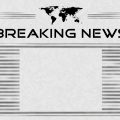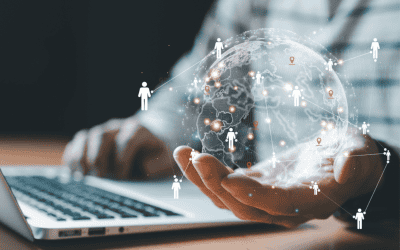In a recent video, Google’s Gary Illyes shared insights into how Google assesses webpage quality during the indexing process. This information is crucial for publishers and SEO professionals who are striving to get their content indexed. Illyes explained that the final step in indexing is determining whether a page meets Google’s quality standards to be included in the search index. High-quality content is crawled more frequently, giving it a competitive advantage in search results. Illyes also highlighted the importance of HTML structure and optimizing the main content of a webpage. As Google continues to prioritize high-quality content, understanding the factors that influence indexing is essential for SEO professionals to meet Google’s standards and increase visibility in search.

Learn about the different types of SEO
Google’s Indexing Process
Overview of Google’s indexing process
Google’s indexing process is an essential part of how the search engine organizes and ranks web pages. During the indexing process, Google analyzes various aspects of a webpage, including textual content, tags, attributes, images, and videos. This analysis helps Google determine the quality of the page and its relevance to user search queries.
Importance of content quality in indexing
Content quality plays a significant role in Google’s indexing process. Google aims to provide its users with the most relevant and useful information in search results. Therefore, pages with high-quality content are more likely to be included in Google’s index and rank higher in search results.
Determining ‘quality’ during indexing
Google uses various signals to assess the quality of a webpage during the indexing process. These signals can include factors like relevance, user engagement, authority, and trustworthiness. By analyzing these signals, Google can determine the overall quality of a webpage and its suitability for inclusion in the index.
Impact of quality on search ranking
The quality of a webpage has a direct impact on its search ranking. Pages with higher quality content are more likely to rank higher in search results, as they are deemed more relevant and useful to users. Therefore, it is crucial for webmasters and SEO professionals to focus on creating high-quality content that meets Google’s standards.
Assessing Webpage Quality
Analyzing textual content
During the indexing process, Google analyzes the textual content of a webpage to determine its quality and relevance to user queries. This analysis includes factors like the relevance of keywords, the quality of writing, and the overall usefulness of the content.
Evaluating tags and attributes
Google also evaluates the tags and attributes used on a webpage, such as title tags, meta descriptions, and header tags. These elements provide important context and clues about the content of the page, which Google takes into consideration when determining the page’s quality.
Considering images and videos
Images and videos can contribute to the overall quality of a webpage. Google assesses the relevance and quality of these media elements during the indexing process. High-quality images and videos that are relevant to the content can enhance the overall user experience and improve the page’s quality.
Calculating signals for quality assessment
Google uses a combination of signals to calculate the overall quality of a webpage during the indexing process. These signals can include factors like user engagement metrics, backlink profiles, and social signals. By analyzing these signals, Google can determine the overall quality of a webpage and its suitability for inclusion in the index.
Index Selection
Final step in indexing process
Index selection is the final step in Google’s indexing process. During this step, Google decides whether to include a page in its index or not. If a page meets Google’s quality standards and other criteria, it will be included in the index and be eligible to rank in search results.
Criteria for including pages in Google’s index
Google has specific criteria for including pages in its index. These criteria include factors like the quality of content, relevance to user queries, usability, and adherence to Google’s guidelines and best practices. Pages that meet these criteria are more likely to be included in the index.
Dependence on page quality
Page quality is a crucial factor in the index selection process. Pages with higher quality content are more likely to be included in the index and rank higher in search results. Therefore, it is essential for webmasters and SEO professionals to focus on creating high-quality content that meets Google’s standards.
Importance of collected signals
The signals collected during the indexing process play a significant role in determining whether a page is included in Google’s index. These signals can include factors like relevance, user engagement, authority, and trustworthiness. By analyzing these signals, Google can make informed decisions about which pages to include in its index.
Frequently Asked Questions about SEO
Crawling Frequency and Quality
High-quality content is crawled more frequently
Google places a higher priority on crawling and indexing high-quality content. Pages with higher quality content are more likely to be crawled more frequently by Google’s bots, which gives them a competitive advantage in search results. Therefore, creating high-quality content is important for maintaining a high crawling frequency.
Competitive advantage of frequent crawling
Frequent crawling of a webpage by Google’s bots can provide a competitive advantage in search results. When a page is crawled more frequently, it has more opportunities to be indexed and appear in search results. This increased visibility can lead to higher organic traffic and better search rankings.
Meeting Google’s quality standard for indexing
To ensure frequent crawling and indexing by Google, it is important to meet Google’s quality standards. This includes creating high-quality content that is relevant, useful, and trustworthy. By meeting these standards, a webpage is more likely to be crawled frequently and indexed by Google.
Conserving crawling resources
Google aims to conserve its crawling resources by prioritizing pages that deserve to be crawled. This means that pages with higher quality content and relevance to user queries will receive more crawling attention from Google. By conserving crawling resources, Google can allocate them more efficiently and provide better search results to its users.
Signals and Duplicate Content Handling
Understanding signals analyzed by Google
Google analyzes various signals to assess the quality and relevance of webpages. These signals can include factors like user engagement metrics, backlink profiles, social signals, and relevance to user queries. By analyzing these signals, Google can determine the overall quality of a webpage and its suitability for inclusion in the index.
Role of rel=canonical annotation
The rel=canonical annotation plays a crucial role in handling duplicate content. When multiple pages have similar or identical content, Google groups them together through a process called “duplicate clustering.” The rel=canonical annotation helps Google identify the canonical version of the content and determine which page to include in search results.
Duplicate clustering process
Duplicate clustering is a process used by Google to handle duplicate content. Similar or identical pages are grouped together, and a single canonical version is selected to represent the group in search results. The selection of the canonical version is based on various quality signals collected about each duplicate page.
Selection of canonical version
The selection of the canonical version of a duplicate page is based on the quality signals associated with each page. Google considers factors like relevance, user engagement, authority, and trustworthiness when determining the canonical version. The chosen canonical version is the one that Google believes will provide the best value to users.
HTML Parsing and Semantic Issues
Importance of proper HTML structure
Proper HTML structure is crucial for effective indexing by Google. Google’s bots parse the HTML of a webpage to understand its structure and content. A well-structured HTML document with clear hierarchies and semantic markup can help Google better understand the content and context of the page.
Potential indexing problems with unsupported tags
Unsupported tags within theelement of a webpage can cause indexing problems. These unsupported tags may not be recognized or understood by Google’s bots, which can lead to confusion and incorrect indexing. It is important to use supported and standardized HTML tags to ensure proper indexing.
Parsing HTML and fixing semantic issues
Google parses the HTML of webpages to extract information and understand the content. During this process, Google may encounter semantic issues or inconsistencies in the HTML. It is important to fix these issues to ensure that Google correctly interprets the content and indexes it accurately.
Optimizing HTML for effective indexing
To optimize HTML for effective indexing, it is important to follow best practices and guidelines provided by Google. This includes using proper HTML5 syntax, avoiding unsupported tags, using semantic markup, and ensuring the overall structure of the HTML document is well-organized and easy to understand.
Main Content Identification
Focus on the main content of a page
Google focuses on the main content or centerpiece of a page when analyzing and indexing it. This suggests that optimizing the primary content of a webpage is more important than making incremental technical changes. The main content should be the primary focus when creating and optimizing a webpage for indexing.
Importance of optimizing centerpiece content
Optimizing the centerpiece content of a webpage is crucial for effective indexing. The centerpiece content is the most important and relevant part of the page, and it should be optimized to meet Google’s quality standards. By focusing on optimizing the centerpiece content, a webpage has a better chance of ranking higher in search results.
Balancing technical changes with content quality
While technical changes are important for effective indexing, it is crucial to balance them with the quality of the content. Making incremental technical changes should not compromise the quality and relevance of the main content. It is important to prioritize content quality while making necessary technical optimizations.
Prioritizing main content for effective indexing
To ensure effective indexing, it is important to prioritize the main content of a webpage. This includes optimizing the main content for relevance and quality, using proper headings and subheadings, and structuring the content in a way that is easy to understand and navigate. By prioritizing the main content, a webpage has a better chance of being indexed and ranked higher in search results.
Index Storage
Google’s search database infrastructure
Google’s search database is an enormous infrastructure that spans across thousands of computers. This infrastructure is responsible for storing and organizing the billions of webpages that Google indexes. The search database is designed to handle the massive amounts of data generated by the web and provide fast and accurate search results.
Distribution across thousands of computers
Google’s search database is distributed across thousands of computers located in data centers around the world. This distributed architecture allows for redundancy and fault tolerance, ensuring that the search database is always available and accessible. It also allows for efficient storage and retrieval of indexed webpages.
Scale of Google’s indexing and storage
The scale of Google’s indexing and storage is immense. Google indexes billions of webpages and stores vast amounts of data in its search database. This requires a robust and scalable infrastructure capable of handling the massive amounts of data and providing fast and accurate search results to millions of users worldwide.
Context for understanding Google’s infrastructure
Understanding the scale and complexity of Google’s indexing and storage infrastructure provides valuable context for how the search engine operates. It highlights the challenges and technical expertise required to organize and access the vast amounts of information available on the web. This context can help webmasters and SEO professionals better understand how Google indexes and ranks webpages.
Optimizing Content for Quality Standards
Creating comprehensive content for audience needs
Creating comprehensive content that addresses the needs and pain points of the target audience is crucial for meeting Google’s quality standards. The content should provide valuable and relevant information that satisfies user intent and offers a solution to their queries. By creating comprehensive content, webmasters can increase the chances of their pages being indexed and ranked higher in search results.
Aligning content with current search demand
To optimize content for quality standards, it is important to align it with current search demand. This involves identifying popular topics and keywords that users are searching for and creating content that matches those search queries. By aligning content with search demand, webmasters can increase the relevance and usefulness of their pages, improving their chances of being indexed and ranked higher in search results.
Emphasizing well-structured and navigable content
Well-structured and navigable content is important for both users and search engines. Clear headings, subheadings, and logical organization make it easier for users to understand and navigate the content. From a search engine perspective, well-structured content helps Google’s bots understand the context and relevance of the content, improving its chances of being indexed and ranked higher in search results.
Implementing schema markup and structured data
Implementing schema markup and other structured data can enhance the visibility and relevance of content in search results. Schema markup provides additional context and information about the content, helping search engines understand its meaning and purpose. By implementing schema markup, webmasters can optimize their content for quality standards and improve their chances of being indexed and ranked higher in search results.
Regularly updating and refreshing content
Regularly updating and refreshing content is essential for maintaining its relevance and value. Google prioritizes fresh and up-to-date content, as it offers the most current and useful information to users. By regularly updating and refreshing content, webmasters can signal to Google that their pages are actively maintained and provide valuable information, improving their chances of being indexed and ranked higher in search results.
FAQ
Overview of index selection process
The index selection process is the final step in Google’s indexing, where it decides whether to include a page in the search index. This decision is based on the page’s quality and various signals collected during the initial assessment. Pages that meet Google’s quality threshold and other criteria are more likely to be included in the index and rank higher in search results.
Importance of quality in indexing
Quality plays a significant role in Google’s indexing process. Google aims to provide its users with the most relevant and useful information in search results, and quality content is more likely to meet those criteria. Pages with high-quality content are more likely to be included in the index and rank higher in search results.
Handling duplicate content
Google handles duplicate content through a process called “duplicate clustering.” Similar or identical pages are grouped together, and a single canonical version is selected to represent the group in search results. The selection of the canonical version is based on various quality signals associated with each duplicate page.
Role of quality signals in duplicate content handling
Quality signals play a crucial role in Google’s handling of duplicate content. These signals, such as relevance, user engagement, authority, and trustworthiness, are used to determine the canonical version of a group of duplicate pages. The chosen canonical version is the one that Google believes will provide the best value to users.









